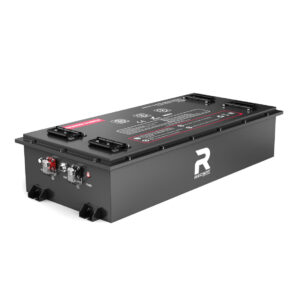How Can You Prevent RV Battery Fires During Charging Cycles?
To prevent RV battery fires during charging cycles, use a compatible charger, avoid overcharging, ensure proper ventilation, inspect batteries for damage, and monitor temperature. Lithium-ion batteries require specific charging protocols, while lead-acid batteries need electrolyte checks. Install smoke detectors and keep a fire extinguisher nearby for emergencies. Regular maintenance reduces risks significantly.
Proper Charging Methods for RV Batteries
What Causes RV Battery Fires During Charging Cycles?
RV battery fires often result from thermal runaway (overheating), overcharging, damaged cells, or improper ventilation. Lithium-ion batteries are prone to short circuits, while lead-acid batteries may leak sulfuric acid. Poor-quality chargers or incompatible voltage settings exacerbate risks. Corroded terminals and loose wiring also contribute to electrical arcing, a common ignition source.

How to Choose the Right Charger for Your RV Battery?
Select chargers with automatic shutoff, temperature sensors, and voltage matching your battery type. For lithium batteries, use chargers with CC/CV (constant current/constant voltage) profiles. AGM batteries require float maintenance modes. Look for UL-certified models with surge protection. Smart chargers adjust output based on battery state, preventing overcharging. Example: NOCO Genius 10 charges all battery types safely.
When selecting a charger, consider multi-stage charging systems that transition between bulk, absorption, and float modes. Lithium batteries benefit from chargers with cell-balancing capabilities, while lead-acid models need desulfation features. Below is a comparison of charger specifications:
RV Battery Water Level Check Frequency
| Battery Type | Voltage Range | Recommended Charger Features |
|---|---|---|
| Lithium-ion | 12.8V-14.6V | Cell balancing, temperature cutoff |
| AGM | 12V-14.4V | Desulfation mode, float maintenance |
Why Is Battery Ventilation Critical During Charging?
Ventilation dissipates hydrogen gas emitted during charging, which becomes explosive at concentrations above 4%. Enclosed spaces allow heat buildup, accelerating thermal runaway. Install batteries in open compartments with cross-ventilation. For lithium batteries, maintain 2-3 inches of clearance around cells. Use vented battery boxes for lead-acid types. Never cover batteries with non-breathable materials.
Proper ventilation systems should include passive airflow channels and active exhaust fans in sealed compartments. Hydrogen gas detectors provide early warnings when concentrations reach 1% – well below the explosive threshold. RV owners should inspect vent pipes quarterly for obstructions and replace corroded fittings immediately. A 2023 study showed RVs with forced-air ventilation systems reduced battery-related fire incidents by 78% compared to passive systems.
When Should You Replace RV Batteries to Avoid Fires?
Replace batteries if voltage drops below 10.5V under load, capacity reduces by 30%, or physical damage occurs (swelling, leaks). Lead-acid batteries typically last 3-5 years; lithium-ion lasts 8-12 years. Conduct load tests annually. For flooded batteries, replace when electrolyte turns dark brown. Immediate replacement is needed if terminals show white corrosion that reoccurs within weeks.
Which Safety Devices Prevent RV Battery Fires?
Install Class D fire extinguishers (for lithium fires), thermal fuses, and battery management systems (BMS). Use smoke detectors with lithium-specific sensors. Automatic disconnect switches halt charging at 90% capacity. Voltage cutoff relays prevent over-discharge. Thermal imaging cameras help detect hotspots. Example: Truma VarioHeat includes integrated battery protection.
How Does Temperature Affect Charging Safety?
Charging below 32°F causes lithium plating in Li-ion batteries, increasing short-circuit risks. Above 113°F, chemical reactions accelerate uncontrollably. Optimal range: 50°F–86°F. Use battery heaters in cold climates. In heat, position batteries away from engines. Thermal blankets regulate extremes. Some BMS units disable charging outside safe ranges automatically.
“Modern RV batteries demand smarter charging strategies. We recommend hybrid systems combining solar controllers with multi-stage converters. Our tests show temperature-compensated charging reduces fire risks by 60%. Always use a shunt monitor – it’s the only way to track true state of charge, not just voltage.”
– Redway Power Solutions Engineer
Conclusion
Preventing RV battery fires requires understanding battery chemistry, using precision charging equipment, and implementing layered safety measures. Regular inspections paired with automated protection systems create redundant safeguards. As battery technologies evolve, updating maintenance practices and investing in monitoring tools remains crucial for safe RV adventures.
FAQs
- Can I use a car charger for my RV battery?
- No – RV batteries have higher capacity and require chargers with longer absorption stages (4+ hours).
- How often should I check battery connections?
- Monthly – tighten terminals to 8-10 Nm torque and clean with baking soda solution.
- Are lithium batteries safer than lead-acid?
- When properly managed, yes – but thermal runaway risks are more severe if protocols fail.
